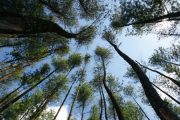Prologue to “Stories From My Prairie Childhood” – Why I’m Here
From retirement on I began to receive and amass a considerable amount of family memorabilia. In 2017 I had become totally overwhelmed by the mountain of disorganized information and didn’t know where to begin. Then I discovered Learning in Retirement at Carlton University. Courses on writing memoirs were available and I jumped at the chance that I might be able to climb that mountain. I’ve been scaling it ever since, at times still overwhelmed, but determined to at least reach the age of 20 on this wondrous and revealing trip into the past. I am assisted by what I learned on the courses and by the informal group that has persisted since my first class with our excellent instructor, Dr. Anna Rumin.
The series “Stories From My Prairie Childhood” focuses on a period that span years of depression and WW ll from the perspective of a pre-teen with two exceptions – “Tough Love” (still to be published) and “Rubella or Rubeola?” (where I was at the ages of 13 and 14). The stories are relatively ordered but may dissolve into disorder from time to time. Memories are like that.
1. The Pasture – Early childhood in my own Garden of Eden, snake included.
2. The Coulee – A study in preschool ethics
3. Rosebush – A one room incubator for growing brains – one space, eight grades
4. Rosebush at War – How a small school and its community reacted to WW2
5. It’s an Ill Wind that Blows no Good – fickle prairie winds as friend or foe
6. The Winds of Woe – Long term after effects of a major hail storm
7. Toe-Nailed – a minor injury runs amok
1. The Pasture
I am day dreaming. In this sequence I am my younger self –2 or 3 or as old as 8 or 9. Today, I’ve chosen 5 or 6 and I’m walking along cow paths that wind around whispering poplar groves and through glades of filtered and sometimes piercing shards of prairie sunlight. I am ready for anything. The pasture and its treasures are mine – all mine! I am my father’s “little wild turkey” and wild turkeys often travel alone.
Wild flowers – violets and buttercups, lady slippers, asters, Indian paint brushes, fireweed, golden rod, shooting stars, tiger lilies, crocuses, and many others pop up, each in their season of choice. A few I will clutch in grubby hands to bring back for Mother – except lady slippers and tiger lilies. They must be left untouched. “If everyone keeps digging them up soon there won’t be any left.”
I am unconcerned about farm animals – cattle and horses. We’ve been taught from a very early age how to behave when in close proximity to them. Just don’t surprise them. They in turn don’t pay any more attention to us than they do to other creatures in the pasture – rabbits, birds, gophers, prowling cats and even the odd skunk.
At times I climb trees in order to get a more panoramic view. In another two years my brother will climb too – to collect bird’s eggs – never more than one at a time unless they belong to crows or magpies. These we can destroy. Dad says they are pests. Climbing has its dangers but our parents have certainly cautioned us. Torn clothes are a minor problem. Broken limbs, trees or ours, are not.
In summer we harvest Saskatoon berries, chokecherries, strawberries, raspberries and pin cherries. We help Mother pick the more prolific berries for canning purposes. We will need them for winter. Oranges and bananas are scarce at any time. They are also expensive – a special treat, and few families have extra money or refrigerators.
Cow paths are an adventure in themselves. They require careful footwork because cows don’t worry about where they leave droppings. Stare too long at birds or bunnies or cavorting calves and you may step into a fresh delivery – barefoot or otherwise this is not nice. The good thing about cow patties – the dried versions – is that they can be collected for fall application to Mother’s flower garden – a fine example of recycling. Well- rotted manure from the barn can be heaped into a ‘smoke pile’. Lighting the pile produces a steady stream of smoke for farm animals seeking relief from mosquitoes and black flies when swishing tails are not enough. For the animals the stench is a welcome alternative to being eaten alive by swarms of pesky bugs.






Anonymous6 years ago
Really connected with your careful orientation to prairie detail. Not enough is known about the
flats..I’m convinced. Write more stories like, “The Pasture,” eh?
The pasture on our home place in Southern Manitoba is much like yours..and it was, “a place of great peace” my brother always said. No matter from where or how long we’d been away from home..a walk though the pasture grounded us.
I need to hear more about the prairie wind? How come nobody writes about it, I wonder? It’s soft and gentle in spring, howling during winter storms..never still, unless there’s a
tornado brewing. It impressed me… yet rarely do I read about it, anywhere? Do you remember it?
Louise, keep writing..there’s a lot of people from other countries who need a home yet they fear cold climates. Not knowing the good parts, I’m thinking?
~Ada